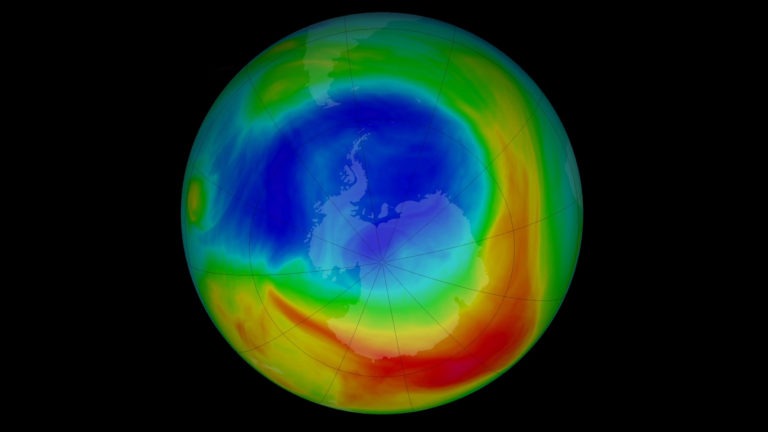New research has claimed that the ozone layer hole over the Antarctic might be getting larger, contradicting recent reports claiming it was recovering.
The New Zealand researchers behind the study published in the journal Nature Communications on Tuesday (Nov 21) argued that ozone levels have reduced by 26 per cent since 2004 at the core of the hole in the Antarctic springtime.
The scientists arrived at the conclusion by analysing the ozone layer’s behaviour between September and November using a satellite instrument. After analysis, researchers said six of the last nine years have had really low ozone amounts and extremely large ozone holes over the region.
The study cited changes in the Antarctic polar vortex (a vast swirl of low pressure and very cold air, high above the South Pole) as one of the main reasons for ozone depletion. It added that tiny, airborne particles emitted from wildfires and volcanoes and changes in solar cycle were also responsible for the depletion.
“This means that the hole has not only remained large in area, but it has also become deeper [i.e. has less ozone] throughout most of the Antarctic spring,” said Hannah Kessenich, the study’s lead author.
“The especially long-lived ozone holes during 2020-2022 fit squarely into this picture, as the size/depth of the hole during October was particularly notable in all three years.”
The ozone layer is responsible for protecting life on Earth from the harmful ultraviolet rays of our Sun. In 1987, after reports claimed that the ozone layer above the desolate continent was destroyed, several countries rallied together to ban or phase down the use of more than 100 ozone-depleting chemicals.
What does the new report contradict?
Earlier this year, a report by the United Nations claimed that the ozone layer would be completely healed within two decades as the airborne chemicals that are destroying the atmospheric layer are declining. The chemicals called chlorofluorocarbons (CFCs) – once widely used in aerosols and refrigerators, were pointed as the major cause of ozone depletion.
According to the report, the ozone layer will be restored to the 1980 levels by 2040 all over the world, 2045 over the Arctic, and by 2066 over the Antarctic.
The report noted that ozone-damaging chlorine declined by 11.5 per cent in the stratosphere between its peak in 1993 and 2020, while bromine declined 14.5 per cent in the stratosphere between its peak in 1999 and 2020.






Hot Deals at Aliexpress https://s.click.aliexpress.com/e/_DldnjaJ
Very good